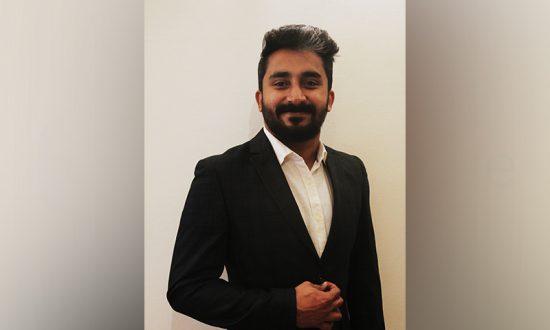Akash Pillai is an engineer-turned-business leader, passionate about leveraging technology to make education accessible to all students across India. He is currently the Chief Business Officer at 90+ My Tuition App, a platform committed to educating India affordably through multilingual virtual tuitions. Akash started his career as a doorstep executive at Byju’s, bringing new learning methods to small towns in Kerala. From there, he joined Extramarks Education, successfully piloting and expanding a diverse e-learning ecosystem across 5 states, in both B2C and B2B segments.
Would you rather study art and sculptures from a textbook or see the Mona Lisa yourself while roaming in the hallways of the Louvre in Paris? Would you rather study deep aquatic life from a textbook or have different species of marine life swim around you? Wouldn’t it be fascinating to see Jawahar Lal Nehru deliver his first speech after independence ‘Tryst with destiny’ in front of you rather than study about it in a long history textbook?
The days of learning from textbooks are numbered, students can now learn from practical experience by sitting at their home. It has been proven by various researchers that students learn better via immersive learning rather than from textbooks.
India has seen development in the IT industry and a shift toward education; more than 4,450 EdTech businesses were created in India since 2014. The EdTech sector received a much-needed boost as a result of the Digital India campaign, which was assisted by over half a billion internet and smartphone users. While the Covid pandemic has caused chaos in many sectors and businesses in India, it has been a watershed moment for the country’s education technology industry.
According to a report, the Indian EdTech industry was valued at US$ 750 million in 2020 and is expected to reach US$ 4 billion by 2025 at a CAGR of 39.77%. For years, we have heard that virtual reality has the potential to play a significant role in the way individuals teach and in education as a whole. The incorporation of technology in classrooms throughout the years has truly helped bring a few new ways of teaching that can assist teachers to deliver a better learning experience to their students. Virtual reality has also played a significant role in this.
Adoption of modern technologies like artificial intelligence (AI), machine learning (ML), augmented reality (AR), and virtual reality (VR) will not replace teachers in the classroom but will provide teachers with vital tools and platforms to ensure successful in-class learning. While teachers recognise that digitalization is necessary, they also want to keep a few unrivalled benefits of a conventional classroom structure, such as classroom conversations, one-on-one help from teachers, and the opportunity to work on group projects. These features are also being adopted by several EdTech start-ups to fill the gap between online and offline education.
However, for this to happen easily, both teachers and students must have proper training in order to use these tools for ease of teaching. Further technological advancements will be gradually introduced into classrooms as learning demands rise.
Virtual reality has the potential to improve education by giving students unique memorable and engaging experiences that would not be possible otherwise. Moreover, it may all take place within the confines of the classroom. Virtual reality is available to all students and can be readily supervised by teachers. VR has the potential to revolutionise the way educational information is provided; it is based on the idea of creating a virtual environment- real or imagined- and allowing users to not only view but also interact with it. Immersion encourages you to completely understand it. The mental strain required to process the information will be reduced.
Hailing the efforts of start-ups in the field of “virtual reality”, PM Modi in his monthly radio programme ‘Mann ki baat’ also called upon them to set up a “virtual lab” keeping in mind the consideration of children. Taking this into consideration many EdTech start-ups have launched virtual labs to help students understand difficult scientific concepts in a fun and engaging way. These virtual labs aim at bringing practical lab experience right to any student’s study desk.
Virtual reality can be used in several ways in modern-day learning. It may be used to educate students in history and geography by creating a fully realistic sense of location and time. There are several apps and websites that provide VR experiences in various locations around the world. People from different corners of the world can also visit places that are otherwise inaccessible. Virtual reality in education is also very useful for content creation. Many creators view virtual reality as a part of the gaming market. VR has traditionally been used for gaming, but this is changing. According to a recent Greenlight VR study, interest in education is 63.9% as compared to gaming i.e. 61%.
VR and AR are two new technologies that have the capacity to significantly enhance education. It will inspire a new generation of young and talented students who are eager to experiment and change the world. There has been an increase in the use of VR for better learning. It is not cheap, and it requires proper alignment between the technology and the curriculum in order to achieve the required outcomes. However, when economies of scale take effect, the cost of VR will become more affordable, making studying via virtual reality an actual reality.




